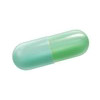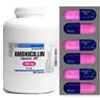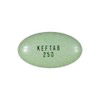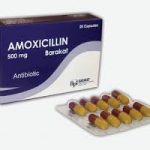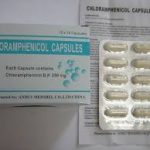Description
A lincomycin antibiotic, Cleocin treats serious infections caused by stopping the production of necessary proteins needed by the bacteria to survive. Cleocin is unable to get rid of viral infections such as the common cold. Unnecessary usage of Cleocin may result in the growth of antibiotic-resistant bacteria that will be significantly more difficult to be removed from the system.
Precautionary Measures
Cleocin should be avoided by individuals with a history of allergic reactions to the drug or to lincomycin antibiotics in general. People with intestinal problems such as colitis or Crohn’s disease should also avoid the drug.
The drug should be especially avoided by pregnant women or women who are trying to get pregnant and nursing mothers. It may affect the foetus and prevent the egg from successfully attaching to the uterus. Additionally, Cleocin secretes into breast milk so nursing mothers should be off the drug well before breastfeeding commences.
People with allergies to food, substances and preservatives should be careful with Cleocin. The same applies for individuals with a history of diarrhoea, liver problems or stomach problems.
Medications such as vecuronium and erythromycin increase the risk of side effects while simultaneously decreasing the effectiveness of Cleocin. Therefore, these drugs should not be taken by anyone at the same time.
Side Effects
Serious side effects to this drug are rare. Examples of serious side effects as indicated by online sources are: rashes on the skin, swelling of the face, throat or tongue and extreme dizziness. If these symptoms are observed, stop taking Cleocin immediately and go to your doctor for further medical assistance. Do not attempt to address the allergic reactions with other medications as the mixture of other drugs with Cleocin could create more problems for the you.
More commonly experienced side effects are nausea, vomiting and diarrhoea. Usually, these side effects are transient and dissipate on their own in a day or two. If these issues persist and become extremely frequent, stop consuming the drug immediately and seek medical attention.
For further details on side effects, contact your physician or healthcare professional at your local pharmacy. Alternatively, you could also get more information before you buy the product.
Dosage
Cleocin is usually consumed orally via tablets or capsules. Cleocin can be taken with or without food, however it should be taken with a full 8-ounces of water. For maximum effectiveness, take the drug at the same time every day. If you do miss a dose, take it as soon as you can to keep the consumption consistent. However, if it’s closer to the time for the next dosage, simply move on to the next one. Do not take 2 doses at the same time as it could lead to an overdose and cause additional problems. The most important aspect of using Cleocin is to finish the full cycle of antibiotics even if the symptoms start clearing up. Cleocin is also available in cheap options at a pharmacy. Regardless of the grade of medication that is being consumed, finishing the full cycle will be the simplest way to fully get rid of the bacterial infection.
